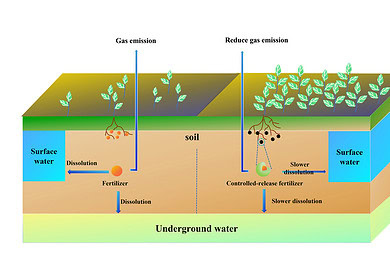Water industry waste could be turned into nano-fertilizers

A group of researchers have published a paper demonstrating that nano-fertilizers are capable of facilitating the controlled, sustained release of essential macronutrients into the soil. The study, which was published in Scientific Reports, stresses that, in the face of growing global food demands and environmental challenges, there is an urgent need for such fertilizers.
The authors point out that, according to the Food and Agriculture Organization, the world’s population is projected to reach 9.8 billion by 2050 and that, consequently, there will need to be a 70% increase in global grain production over the next 25 years. However, traditional fertilizers, while essential for crop yield improvement, often lead to nutrient loss, soil and water pollution, and inefficiency due to their uncontrolled release mechanisms.
The researchers thus set out to assess the viability of novel, eco-friendly, nano-enabled fertilizers (NEFs) synthesized using nanostructured water treatment residuals (nWTRs) impregnated with potassium phosphate and magnesium oxide. These nWTRs – by-products of the drinking water purification process – offer a low-cost, sustainable carrier for the controlled release of nutrients. They said the innovative use of nWTRs not only addresses the waste disposal issue faced by the water treatment industry but also provides an environmentally safe method for enhancing agricultural productivity.
The performance of these NEFs was meticulously evaluated, and, crucially, demonstrated significant improvements in water retention and nutrient release rates compared to conventional fertilizers. For instance, soil treated with the newly developed NEF retained water 9.3 times more effectively after 26 days and exhibited prolonged release periods for phosphorus, potassium, and magnesium. Such attributes reduce the risk of leaching and nutrient loss, promising a more sustainable approach to agriculture, the scientists said.
The kinetic studies conducted as part of this research further established the effectiveness of these nano-fertilizers, revealing that the power function model best described the release of nutrients. Additionally, when applied to Zea maize plants, the NEFs notably promoted growth and phosphorus content beyond what was observed with traditional chemical fertilizers.
The researchers’ work not only highlights the potential of nanotechnology in developing sustainable agricultural practices, but also illustrates the benefits of repurposing industrial waste into valuable resources. By fostering the use of nano-enabled fertilizers, this research points towards a future of increased crop production efficiency and reduced environmental footprint. It thus represents a significant step forward in the quest for global food security and sustainable ecosystem management.
Enjoyed this story?
Every Monday, our subscribers get their hands on a digest of the most trending agriculture news. You can join them too!
















Discussion0 comments